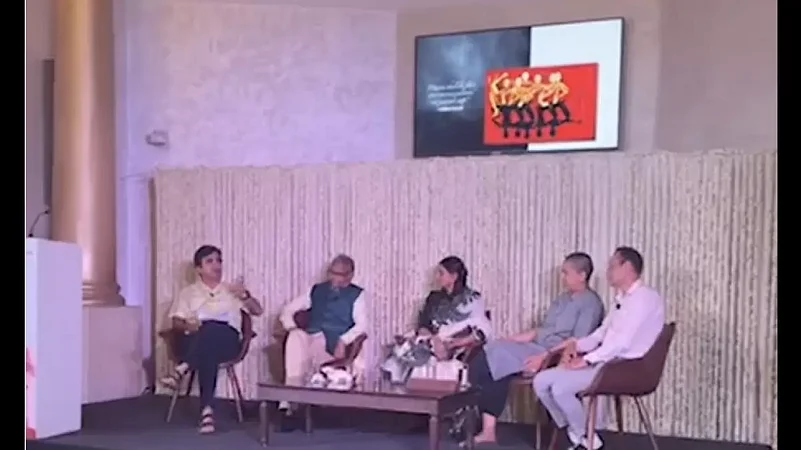At the second edition of Bihar Museum Biennale in Delhi, Avni Sethi of Conflictorium, YS Alone art historian and JNU professor, Gustav Imam the curator and collector Sanskriti Museum and Professor Ajay Gudavarthy joined Chinki Sinha for a discussion on museums and conflict.
Avni Sethi says, "We are a complex society and we don't have the space to talk about the complicated society. While Ahmedabad had seen excruciating violence and how it shaped the city and its architecture, its culture and relationship. The people had either been perpetrator, victims or witness. If you are any of this, your life can be changed. Conflict Museum came out of it. We live in the age of narratives. There would be two ways to change the narrative, either through text books or museums."
Professor YS Alone says that in artistic things, we do have transcendental meaning without addressing the people who need to have some connections. He asks: where is the representation? Why can't we have a museum of consciousness? China has museum of poets. Can't we have one? Marathi literature is full of Dalit poetry that challenges the brahminical narratives. Why can't we have these kind of museums?
Gustav Imam, the curator and collector Sanskriti Museum says that the Sanskriti museum started in 1991. "My father had discovered one of the oldest rock arts in the region. We children also started to collect artefacts," he says.
"Bihar and Jharkhand are not much different. Jharkhand has coal. There was mass displacement of people in Jharkhand. My father’s work was in an area where tribal people were being displaced. There was no rehabilitation programme then. I have witnessed these things as a young boy. My father also discovered tribal art. He had an idea he could use this art and museum to take the message to the people," he says.
Professor Ajay Gudavarthy while talking about the significance of museums focusses on how in India, everything is living and hardly anything can be museumised. For reference, he spoke about untouchability. Would it be placed in a museum? Do we have any possibility?
















